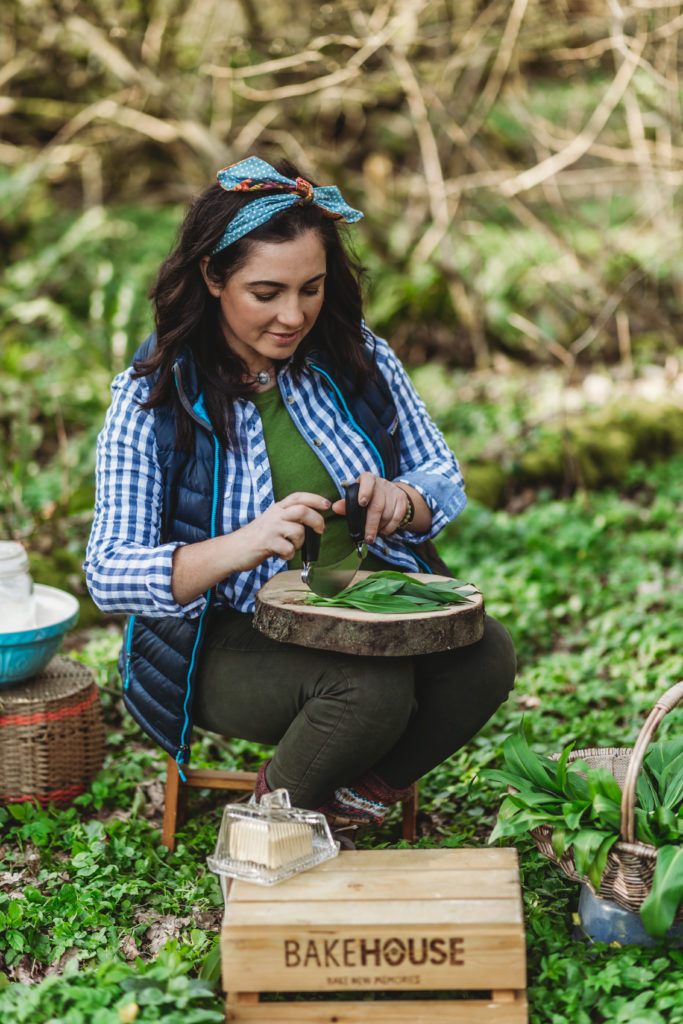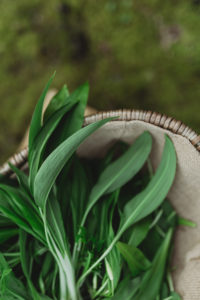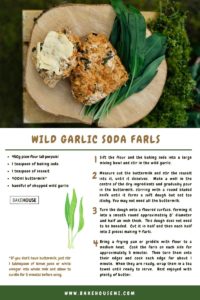Spring has sprung and wild garlic, also known as ramsons (Allium ursinum) is now ready to forage. Wild garlic is delicious in many recipes, raw or cooked, with the young leaves giving a delicate garlic flavour before becoming stronger flavoured, once the flowers bloom. Wild garlic is milder in flavour than traditional garlic bulbs. The leaves, which are rich in vitamins and minerals aren’t just good for culinary use but can also have a role in medicines, with studies having shown they can be beneficial for heart health, lowering blood pressure, as well as helping to ease coughs and colds when mixed with honey. All parts of the wild garlic can be used for culinary use.
Where to find wild garlic.
As the days get longer and while trees are still bare, the sunshine has the opportunity to bathe the forest floor and encourage the plants on the ground to spread. Wild garlic starts to appear from late winter and grows most commonly in damp, woodland areas such as forest floors and shady countryside lanes or near streams and riverbanks. The young wild garlic leaves start to appear first, growing as clusters before the single flower stalk appears. This flower makes the plant easily identifiable with its star like blossoms appearing as the weather gets warmer. The wild garlic is identifiable by its long leaves, with smooth edges, oval shaped, like pointed spears, with a single central vein running along the length of the leaf. Why not take a wee dander in your local woodland and see if you can spot any and as the weather warms up, you will definitely be able to smell it as you walk past. Locally I love to pick wild garlic in Portglenone Forest or along the Clady River, which are both gorgeous walks.
When foraging for wild garlic, it is advisable to carefully harvest it leaf by leaf. There are a few similar but poisonous plants such as Lords and Ladies or the Lily of the valley, often growing in the same area, which you would not want to mistake for wild garlic. If unsure, then wait until the wild garlic flowers have bloomed, then you can be extra certain of a safe harvest, as well as by crushing the leaves to release the identifiable garlic aroma.
Foraging sustainably
All parts of the wild garlic are edible but do not dig up bulbs, or strip the plant of all leaves and flowers in order to support healthy ecosystems in nature and not have a detrimental impact. You should always only forage enough for personal use, that you will use. It is important to leave enough for wildlife and others to enjoy.
Favourite wild garlic recipes
One of my favourite recipes to use it in is wild garlic soda bread. The freshly picked leaves can be roughly chopped up and stirred into the bread dough before baking. This bread is delicious served warm with plenty of butter. Soda bread is so quick and easy to make and it is a lovely way to enjoy wild garlic. I also love to make wild garlic into a pesto, mixed with a delicious concoction of walnuts or pine nuts, olive oil, parmesan cheese and well seasoned. This pesto is delicious stirred into pasta or as a dressing for salads. The leaves and flowers are great in salads, making them not only taste delicious but look really pretty too.
In my cooking school just outside the village of Bellaghy, I offer wild garlic foraging and baking classes. In this class you will have the opportunity to go for a stroll in the countryside to pick the wild garlic with me, as you learn about its habitat, season, safe identification and culinary uses. You will also have the opportunity to make your own wild garlic soda farls, using my recipe above. This class runs from early March until late April when the season ends.






